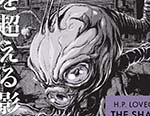 Running for ten years between 1974 and 1984, Bella at the Bar holds a place as not just one of the most popular comic strips in the UK’s weekly Tammy anthology but as one of the most successful runs in British girls comics history ever. This first collection from Rebellion’s much respected Treasury of British Comics line compiles the first two story arcs from between 1974 and 1975, alongside a short story (rather strangely rebranded That Barlow Kid) from the 1976 hardcover Tammy Annual. While all the Treasury books have been a delight so far – whether by reigniting interest in forgotten features or through the warming appeal of their nostalgia factor – few of them will pull the reader into the intensity of their protagonists’ lives with quite the same level of empathy as this classic of its time.
Running for ten years between 1974 and 1984, Bella at the Bar holds a place as not just one of the most popular comic strips in the UK’s weekly Tammy anthology but as one of the most successful runs in British girls comics history ever. This first collection from Rebellion’s much respected Treasury of British Comics line compiles the first two story arcs from between 1974 and 1975, alongside a short story (rather strangely rebranded That Barlow Kid) from the 1976 hardcover Tammy Annual. While all the Treasury books have been a delight so far – whether by reigniting interest in forgotten features or through the warming appeal of their nostalgia factor – few of them will pull the reader into the intensity of their protagonists’ lives with quite the same level of empathy as this classic of its time.
When we first meet young Bella Barlow she’s living a miserable life with her bullying Uncle Jed and Aunt Gert, forced to “earn her keep” by working on the odious Jed’s window cleaning round. Already showing a natural agility and sense of balance, Bella is captivated when she observes a gymnastics class while washing windows at a girls school. So begins a long journey to fulfil her sporting promise as the young prospect is taken under the wing of various kindly school teachers and gym coaches while simultaneously being exploited by her awful relatives who involve her in their various insidious get-rich schemes. Along the way she will find herself homeless, working in a seaside show, aided by mysterious benefactors and spending time in Russia, as she looks to achieve her dream of representing her country in international competition…
Jenny McDade and John Armstrong’s Bella is a working class heroine in a serialised strip (each instalment runs three densely packed pages in length) that alternates from kitchen sink drama to the kind of sports drama that was a popular part of the British weekly comics traditions of the time. These first two arcs deftly set up the story’s premise with the almost Dickensian villains Jed and Gert counterpointed by bullying schoolmates and fellow gymnasts as the ever isolated Bella’s outsider status ensures our deep investment in her troubles. As she plunges from one crisis to another – her plans to outwit her guardians getting ever more complex and complicated – the audience roots for this truly sympathetic and put upon character; one whose very occasional moments of happiness or triumph are all the more of a joy to the reader for their scarcity.
The initial storyline here wraps up abruptly before the reset button is pushed and Bella’s unhappy status quo restored with a second arc that pushes her narrative forward into a less domestic setting. While McDade’s poignant portrayal of the character’s trials is touching in the extreme it’s John Armstrong’s subtle realism that brings the athletic side of her life to graceful life. The sense of motion and energy in his quite beautifully rendered gymnastic sequences is hypnotic in its careful choreography with a humanity that is undeniable in its realism. Visual characterisation is quite outstanding, emphasising the grotesque bullying malevolence of Jed and Gert, and underpinning the innocent optimism of Bella who, despite her many ordeals, never gives up in her determination to see her goals realised.
This one is a genuine classic and with a timelessness that will ensure it’s as likely to appeal to a children’s audience in 2019 as it did the first time around in 1974. Whether you’re looking to revisit an old favourite or introduce a younger reader to the Treasury of British Comics line (or perhaps both!) Bella at the Bar is an undeniable example of the remarkable craft on show in what was a creative golden age for UK comics practice
Jenny McDade (W), John Armstrong (A) • Rebellion/Treasury of British Comics, £10.99
Review by Andy Oliver




















